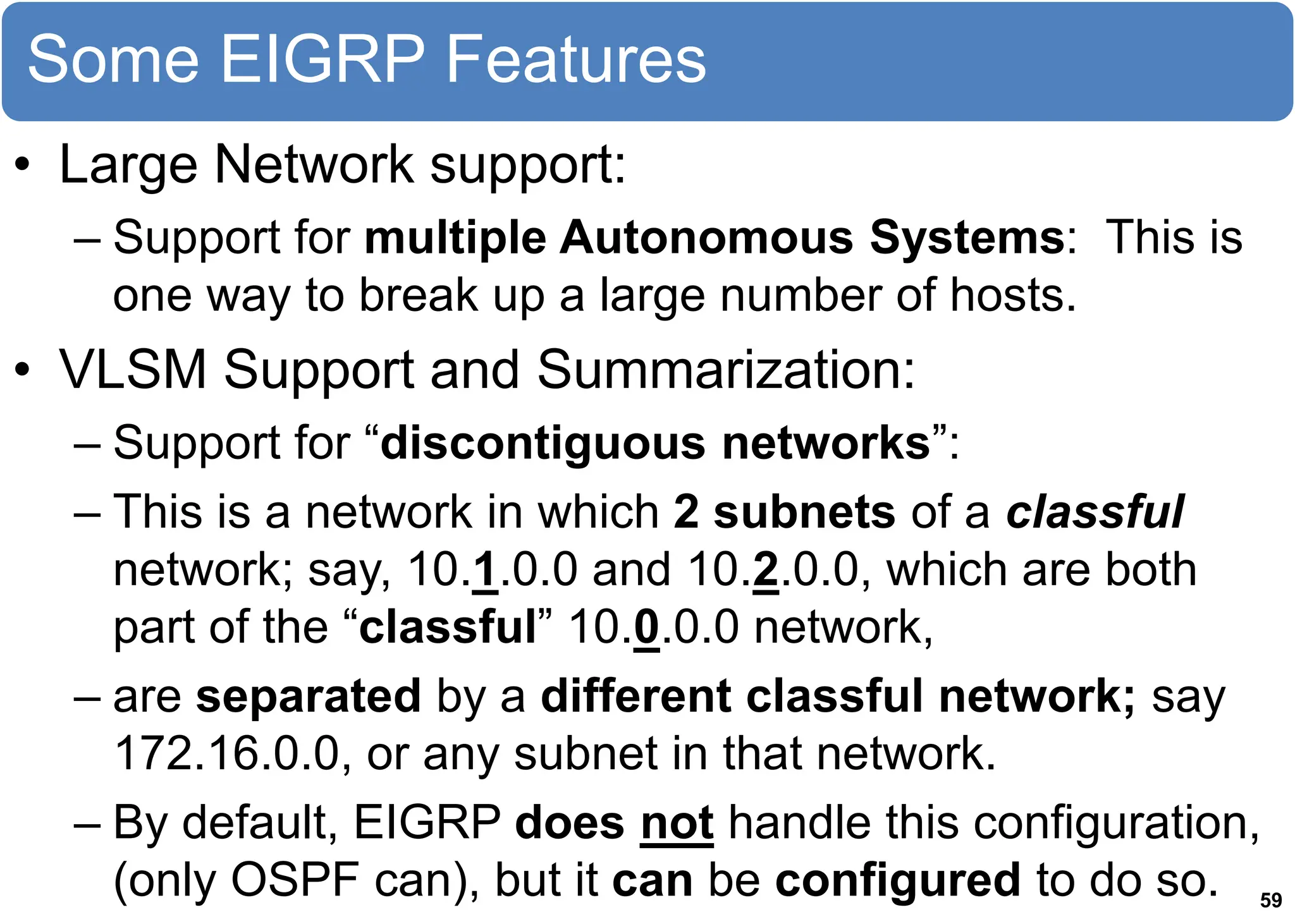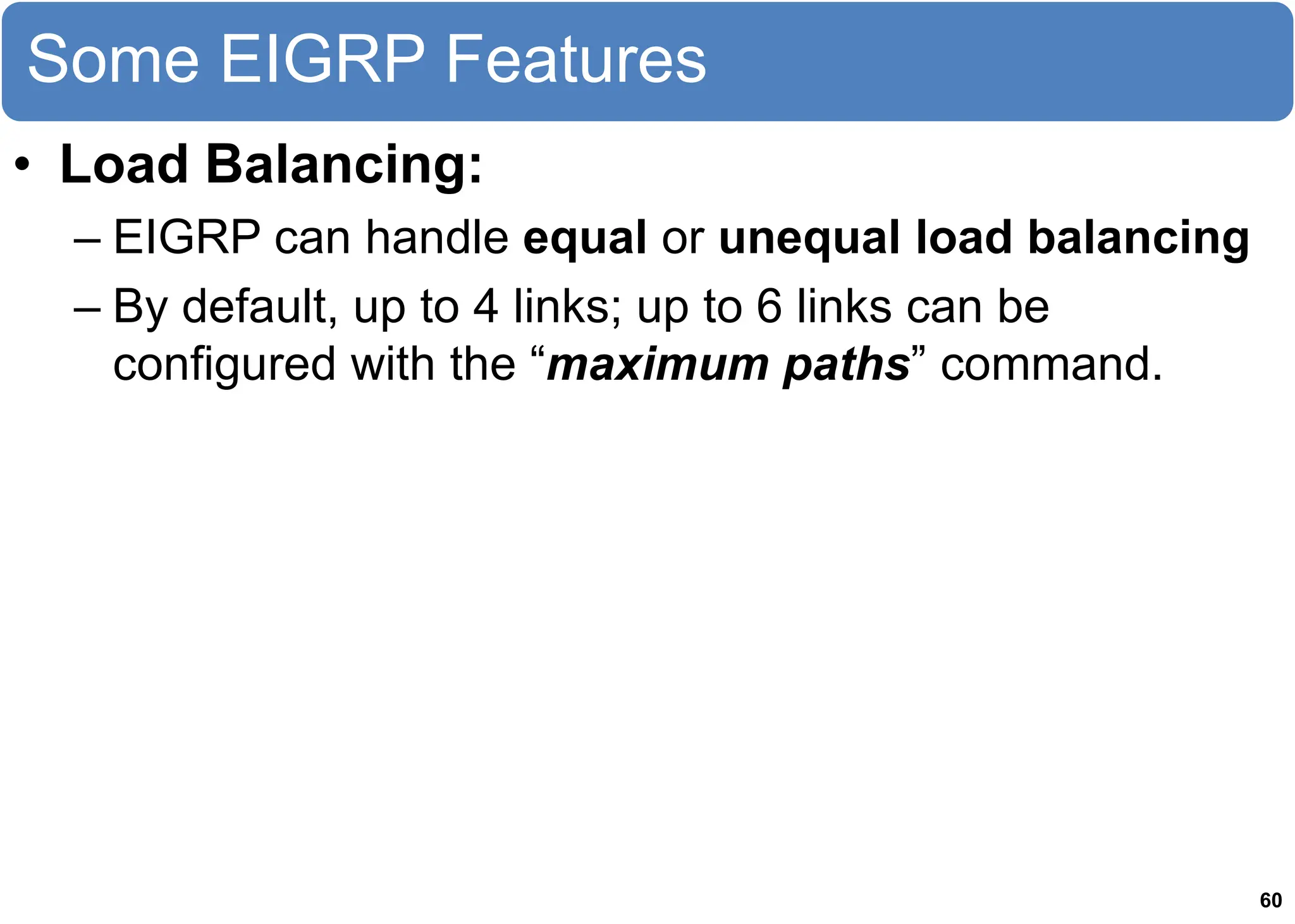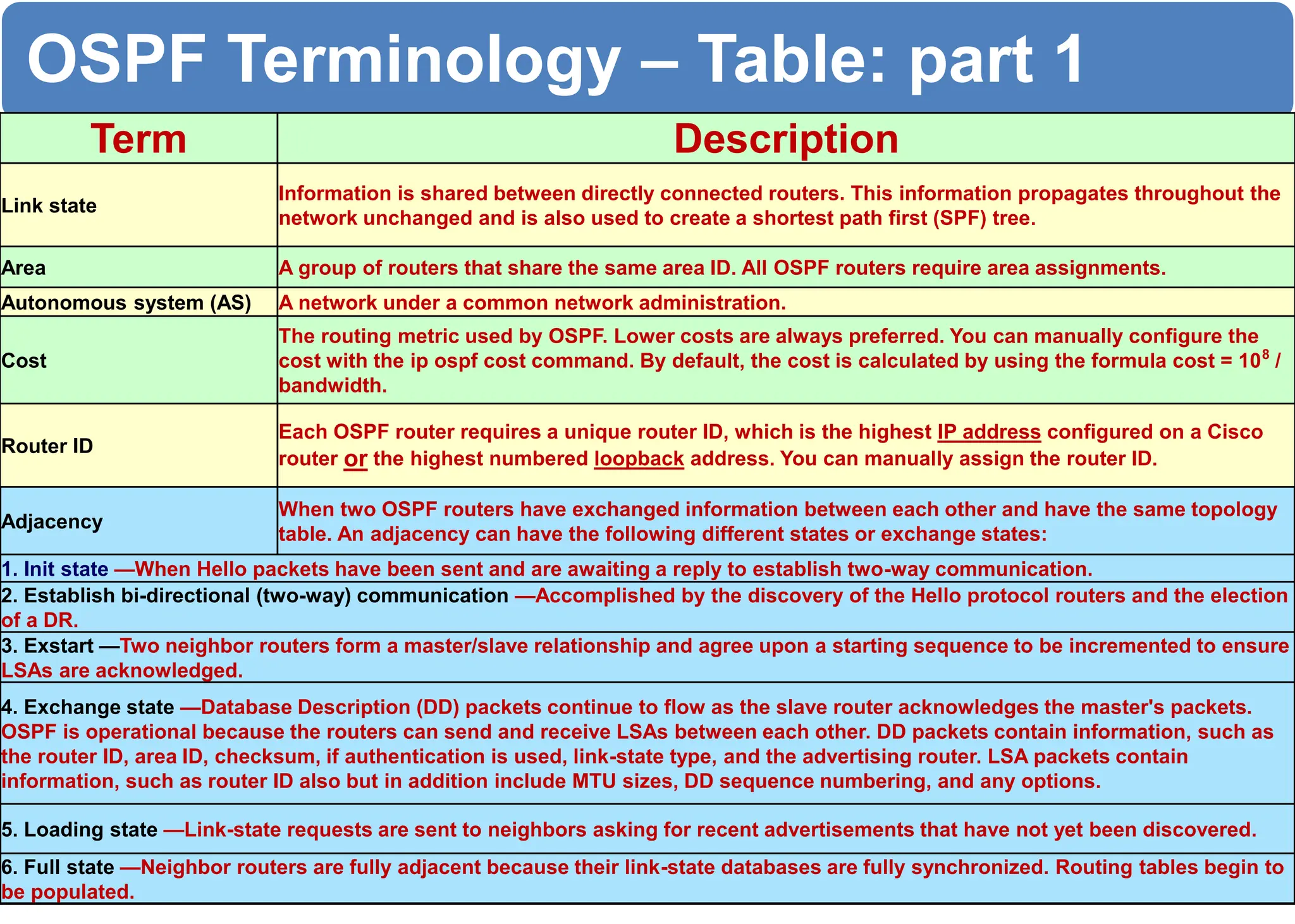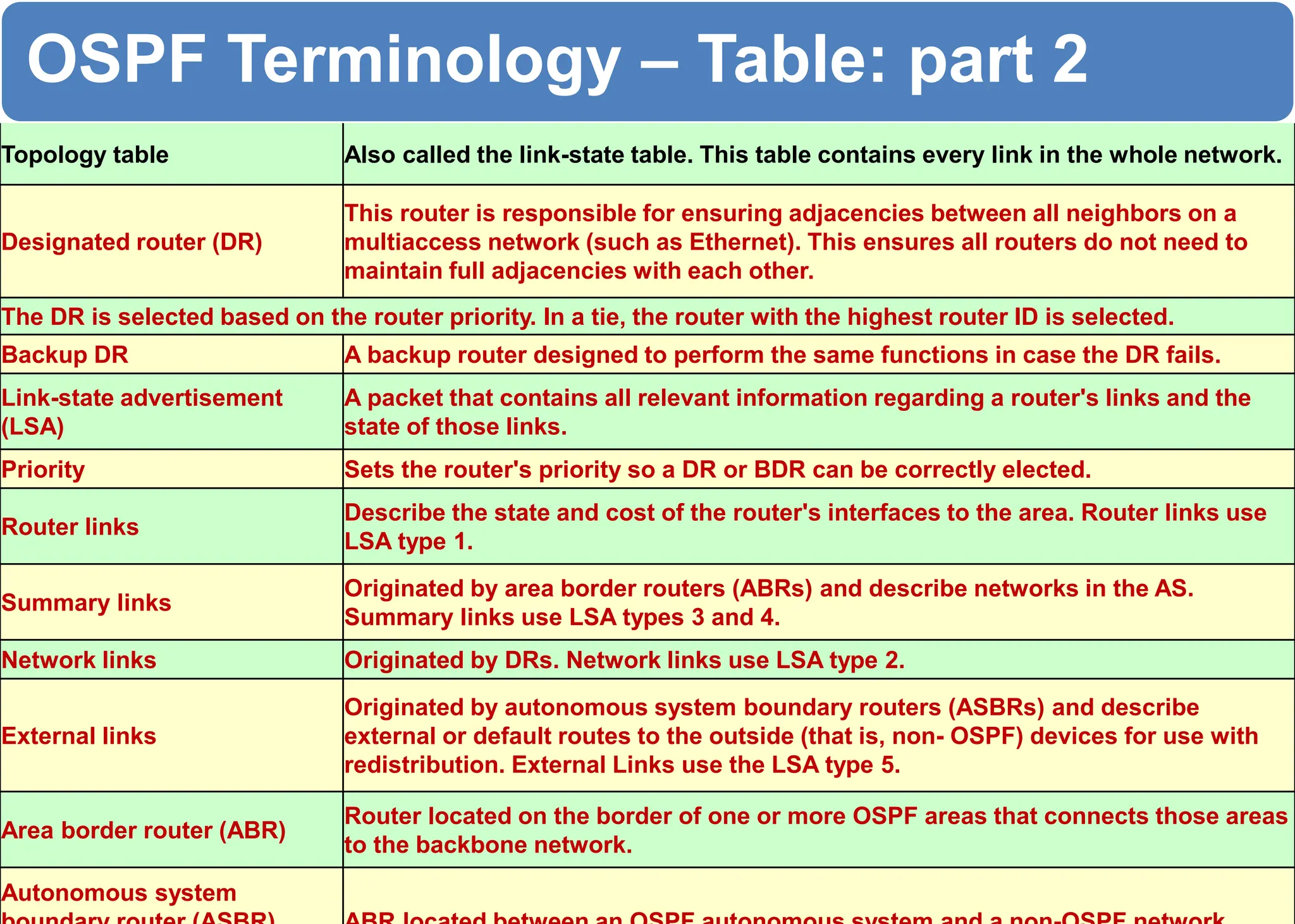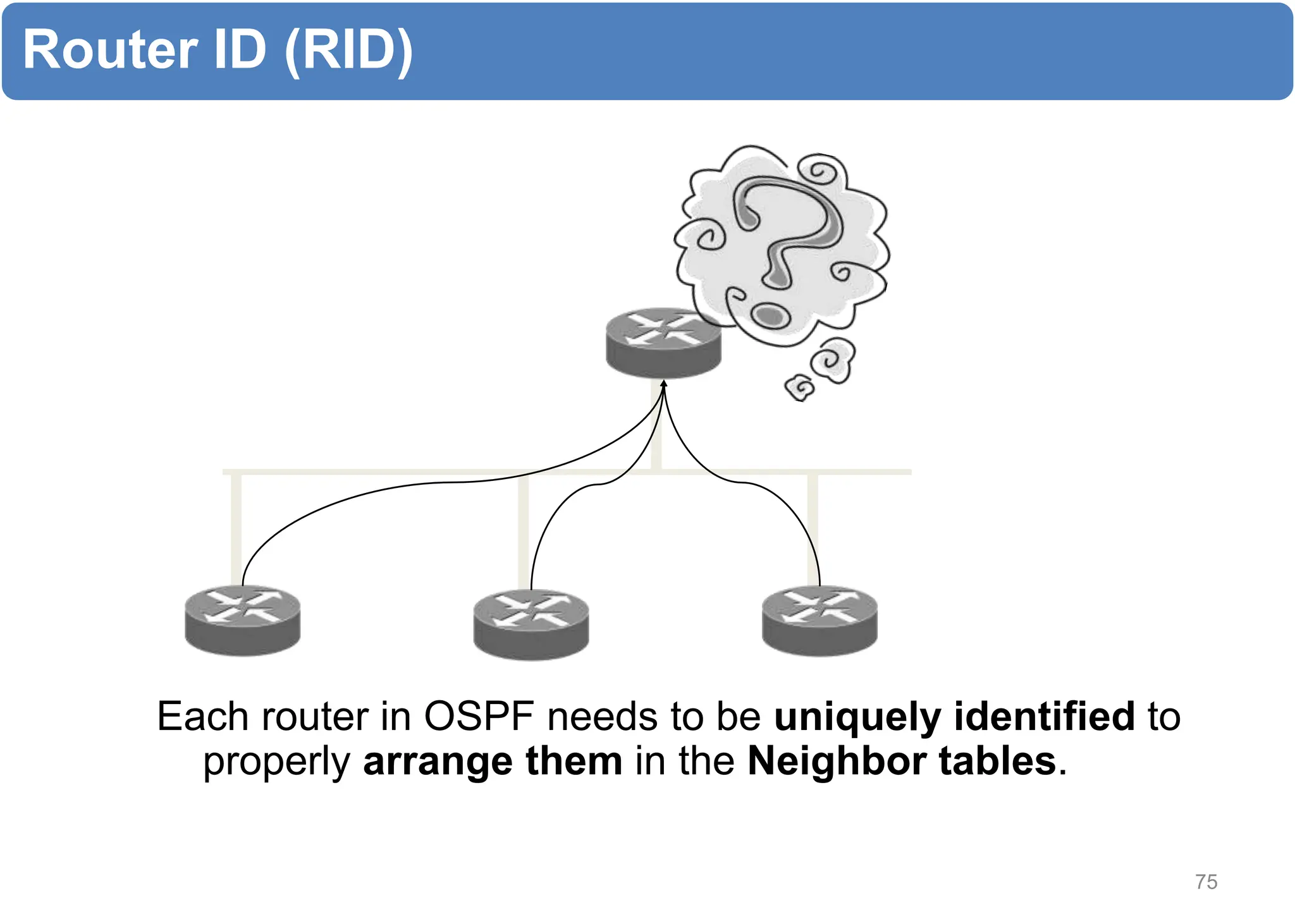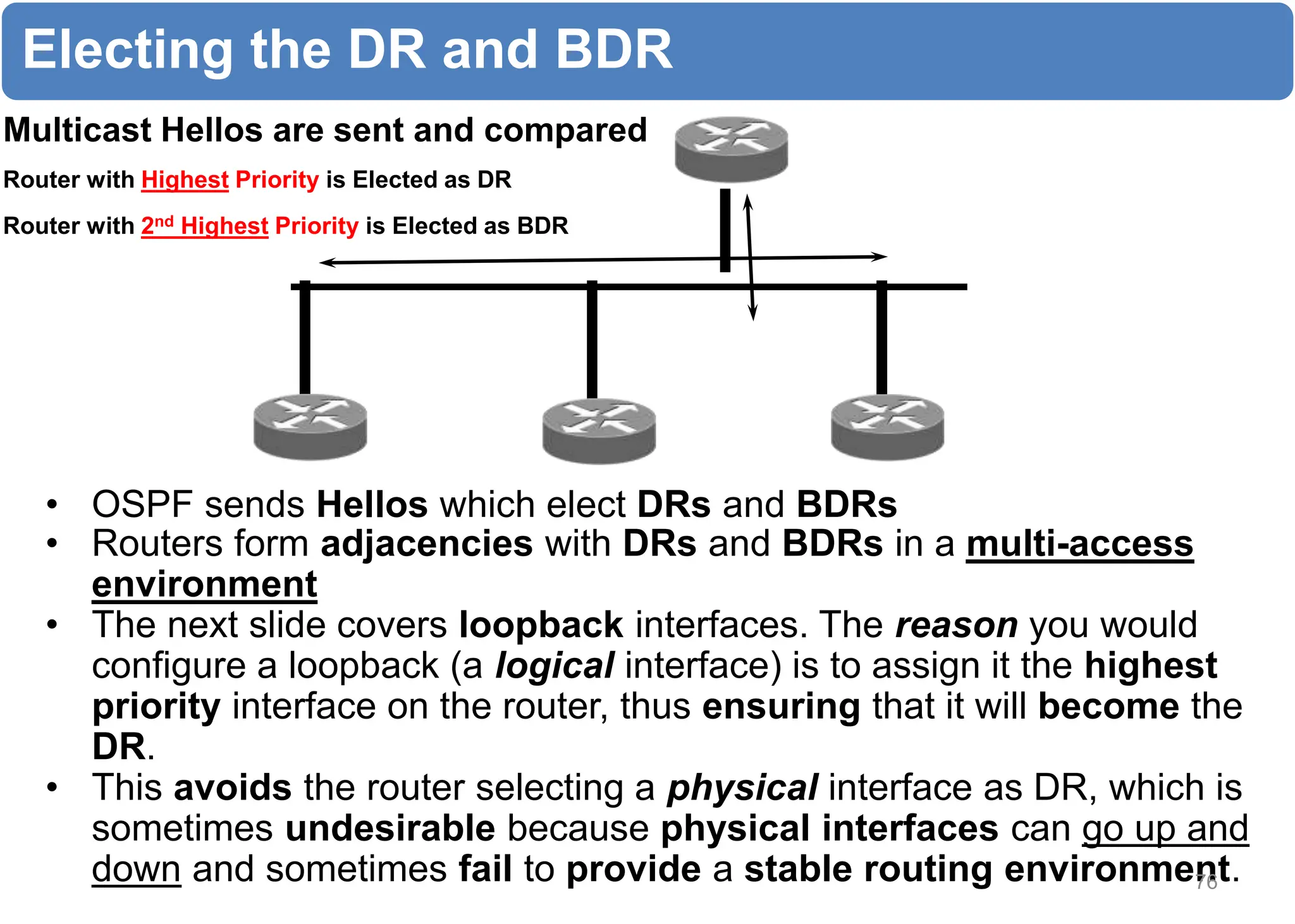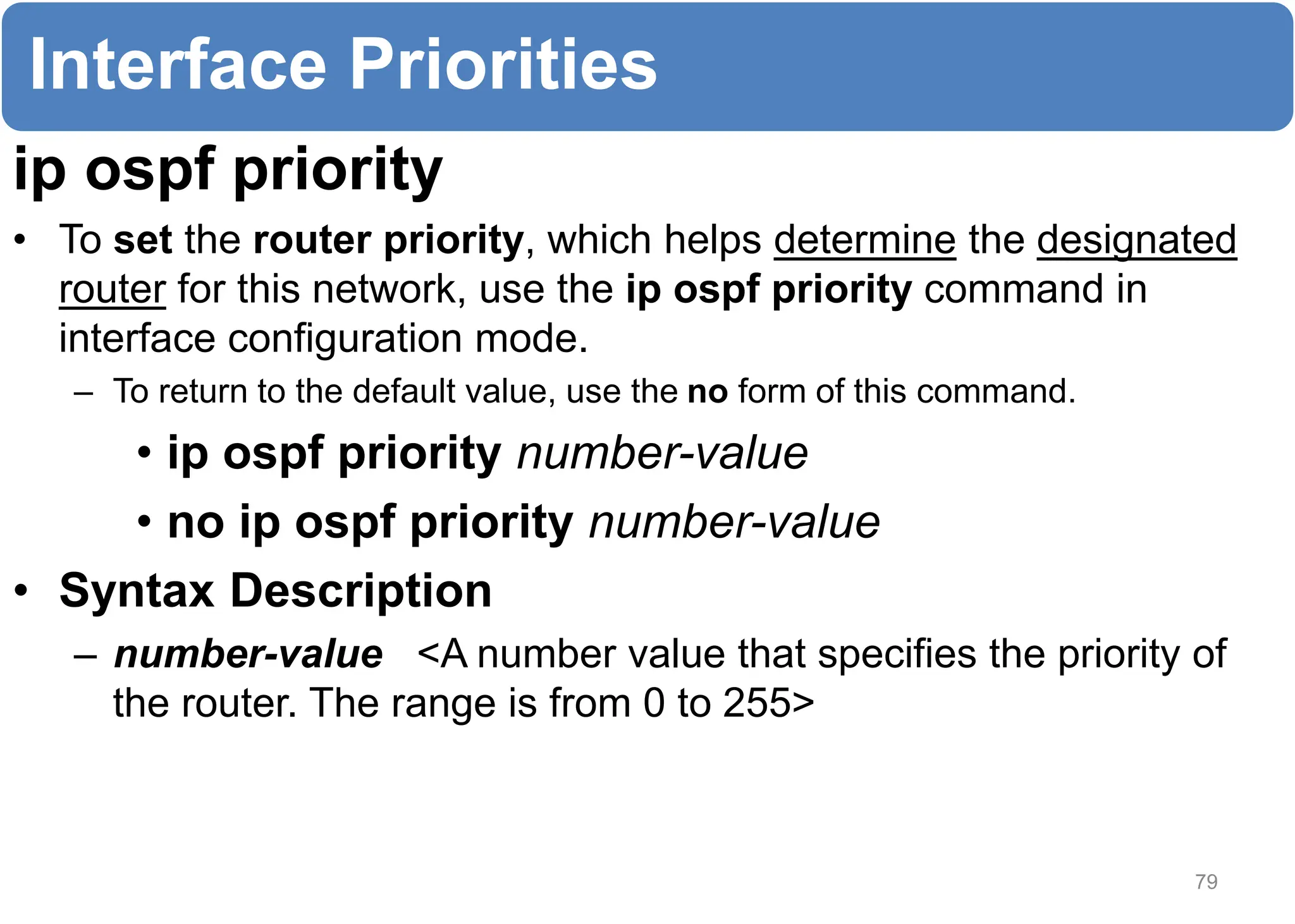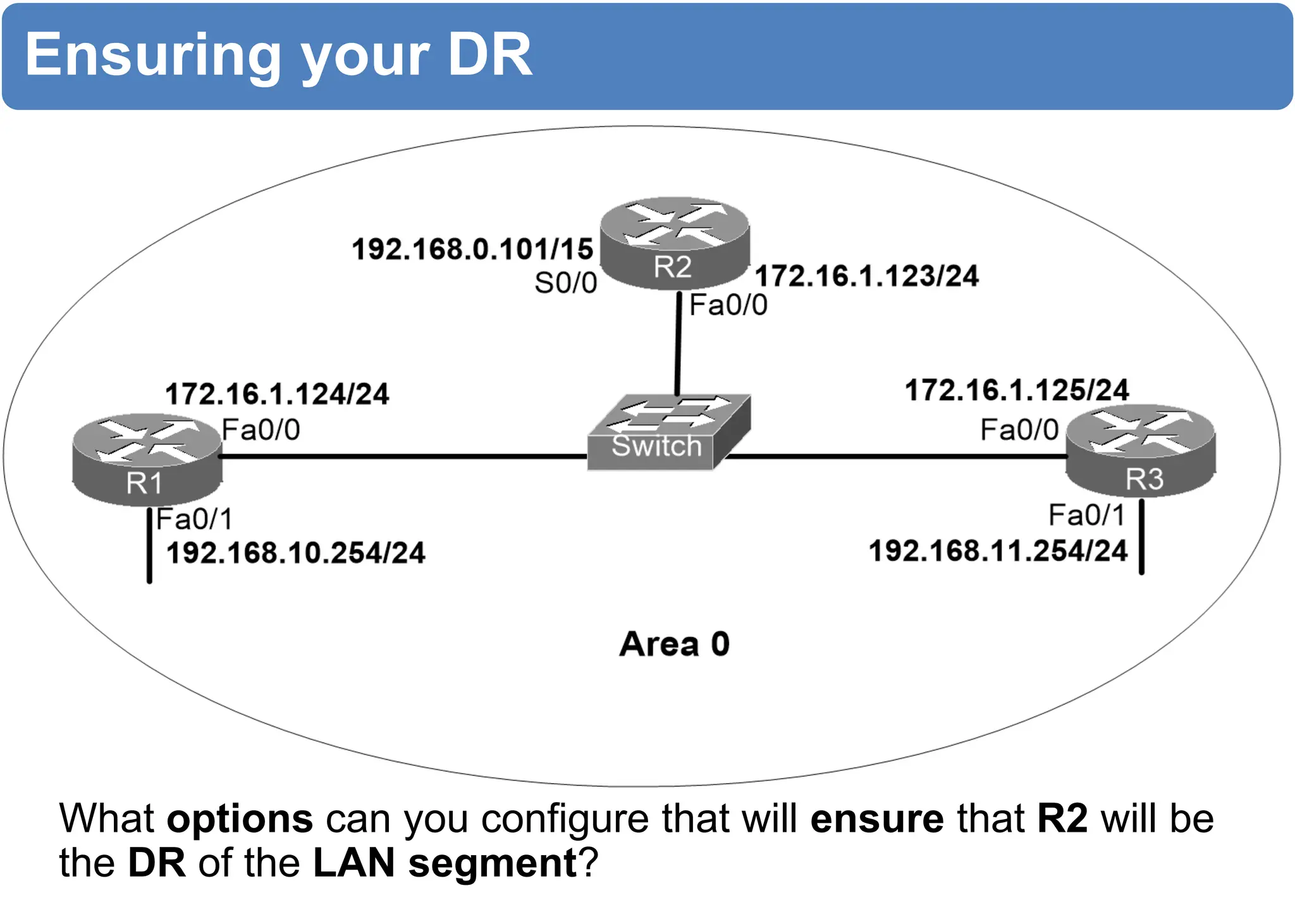The chapter discusses EIGRP and OSPF routing protocols. It provides information on configuring and verifying EIGRP, including EIGRP tables, metrics, neighbor discovery using hello packets, and terminology such as feasible successors. It also covers configuring and verifying OSPF, as well as using wildcards.




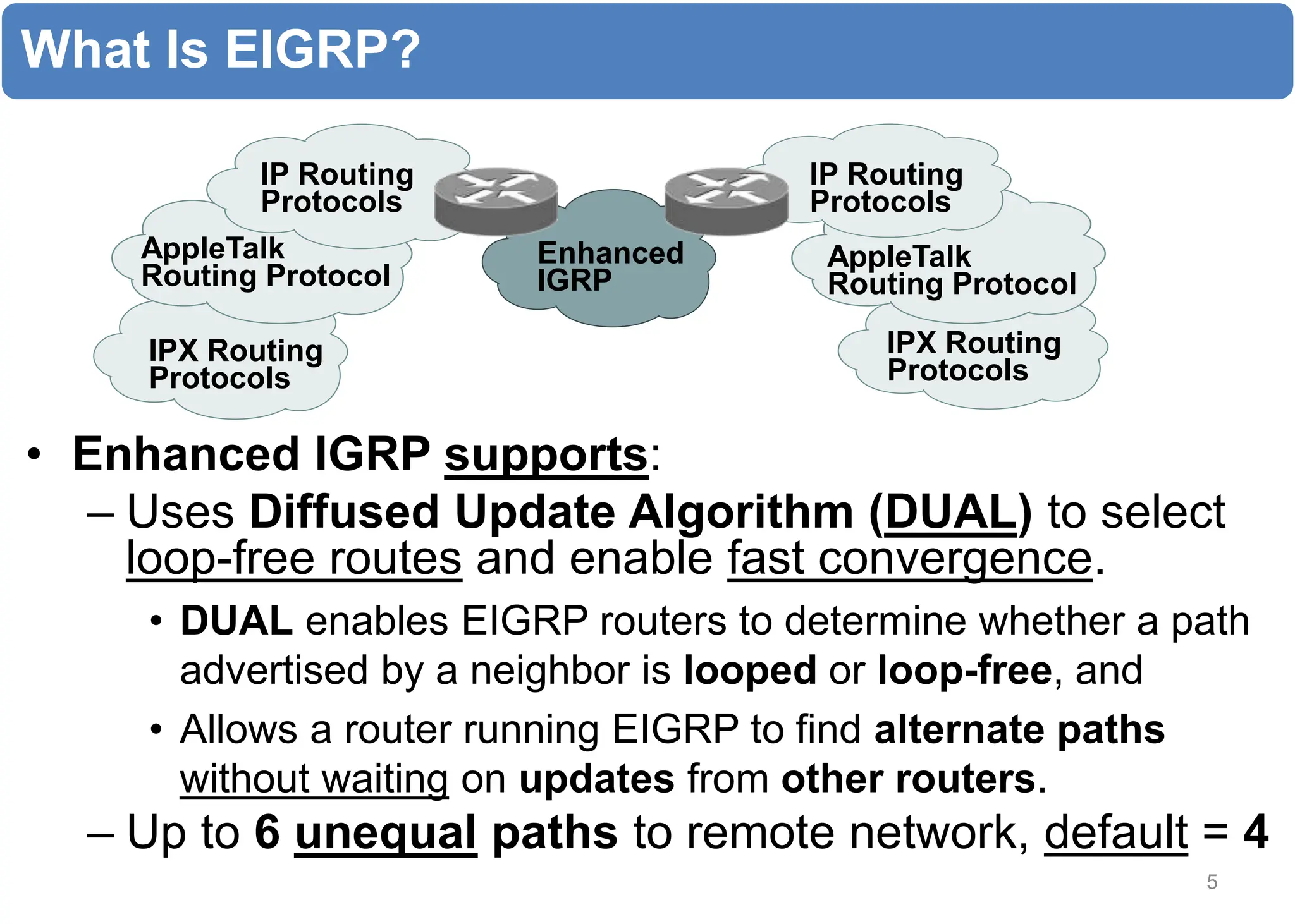




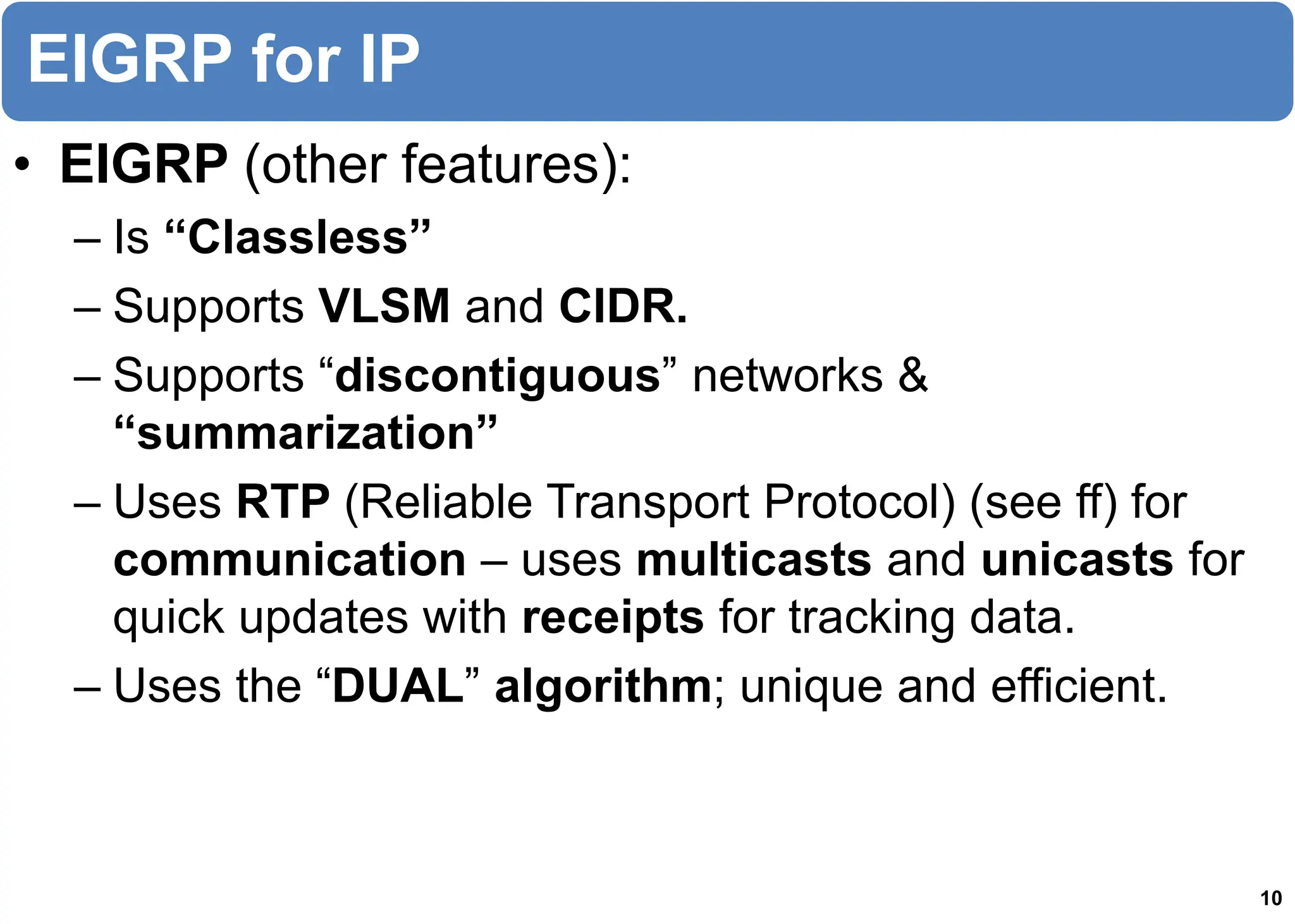




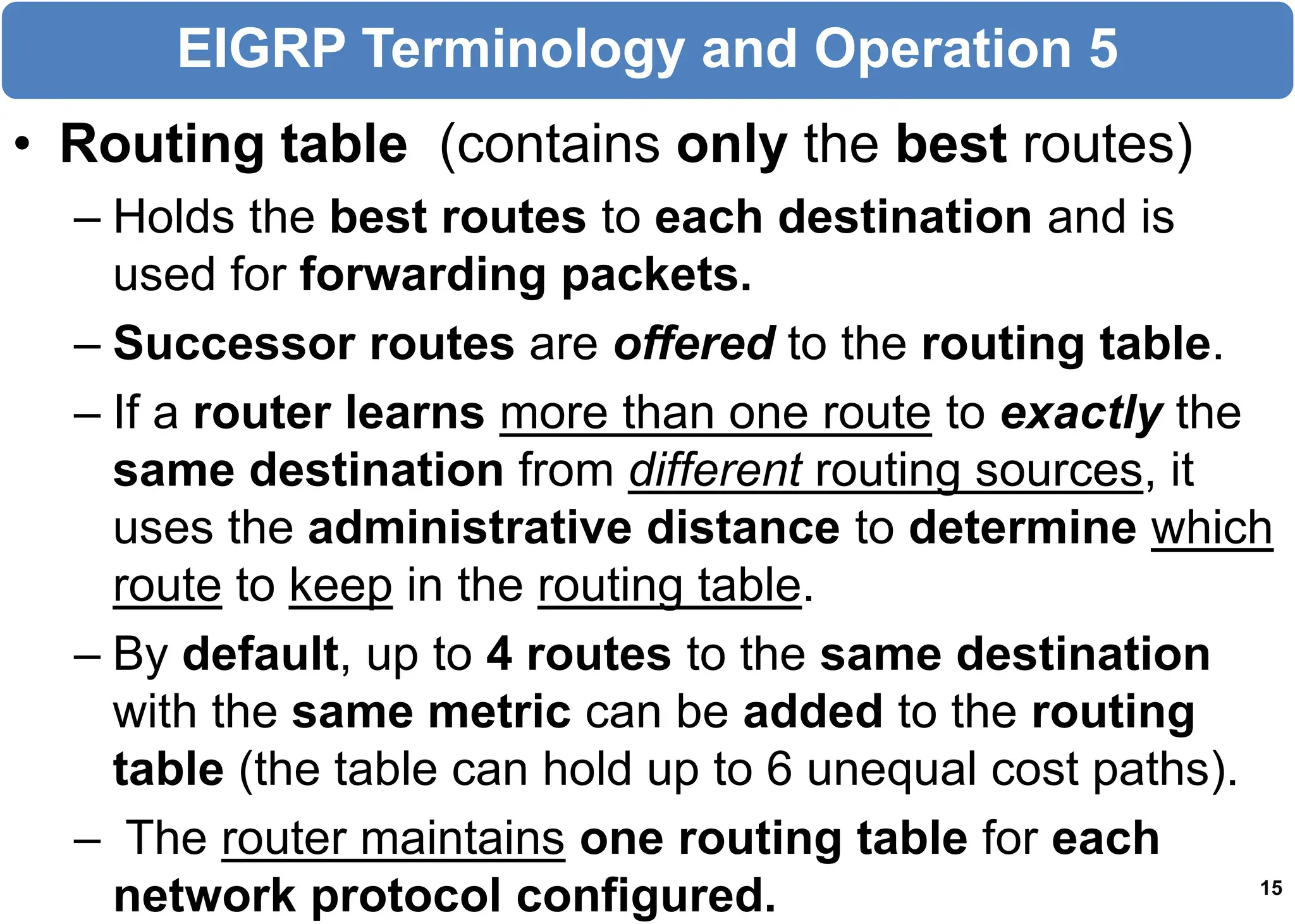




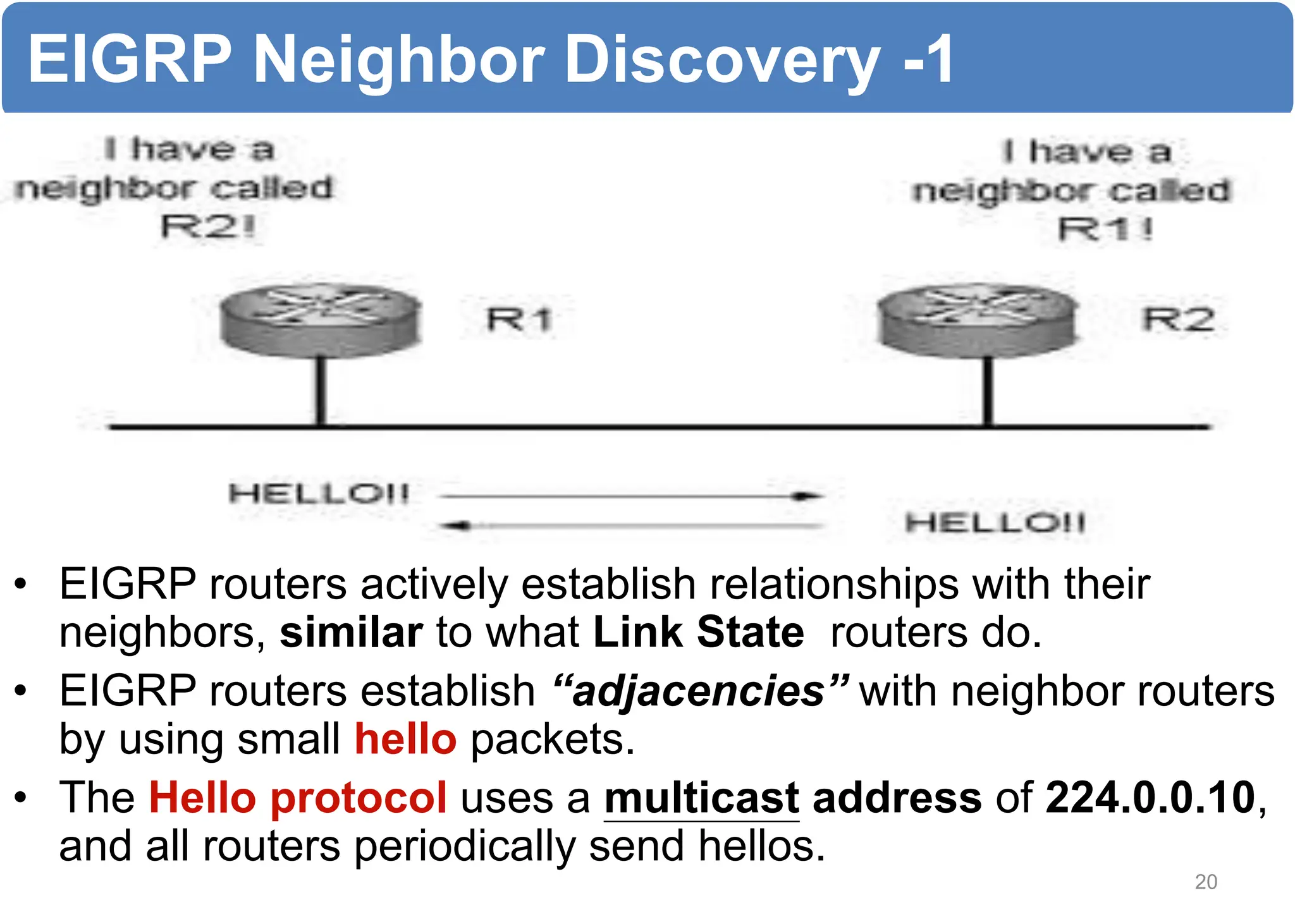


























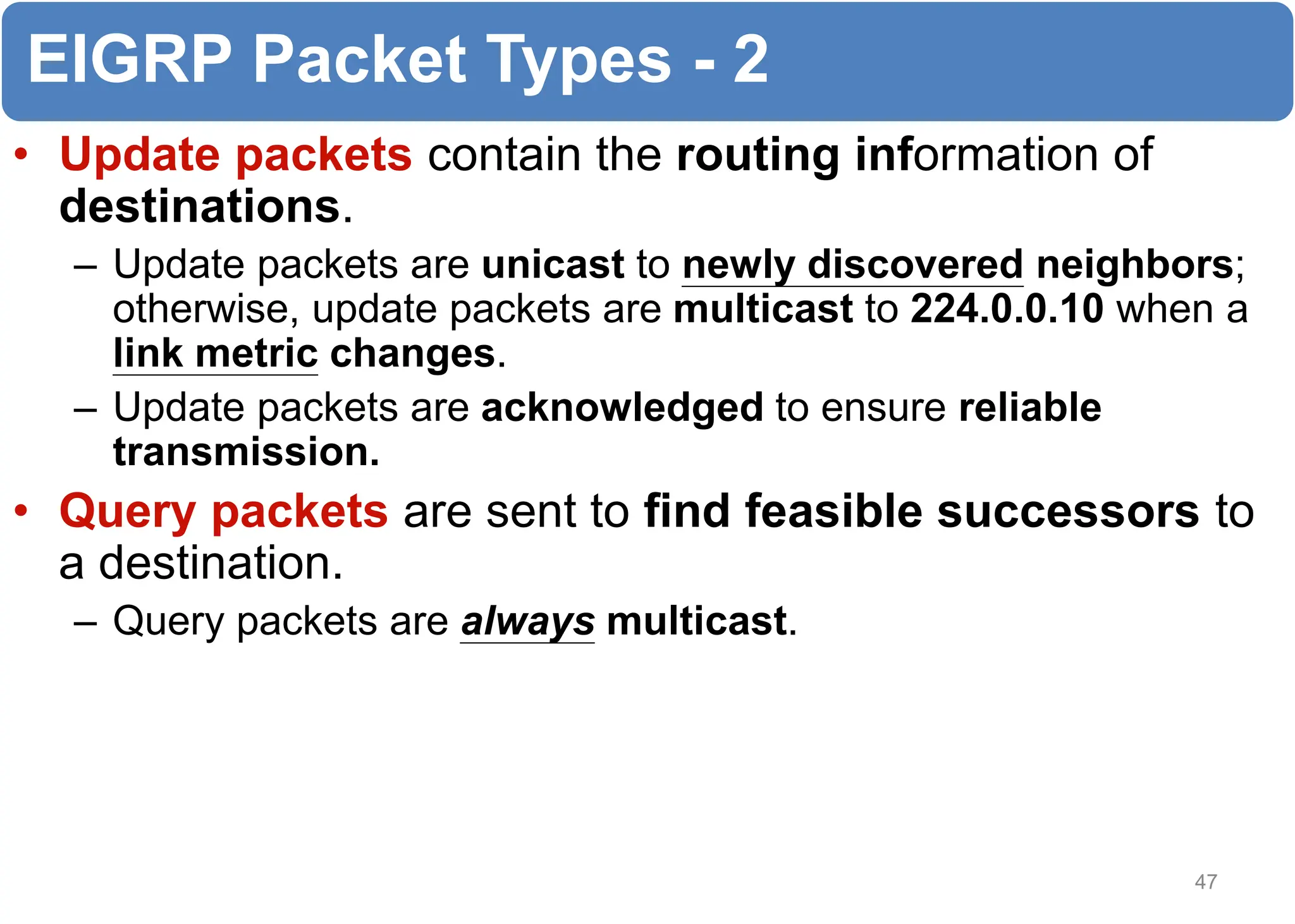



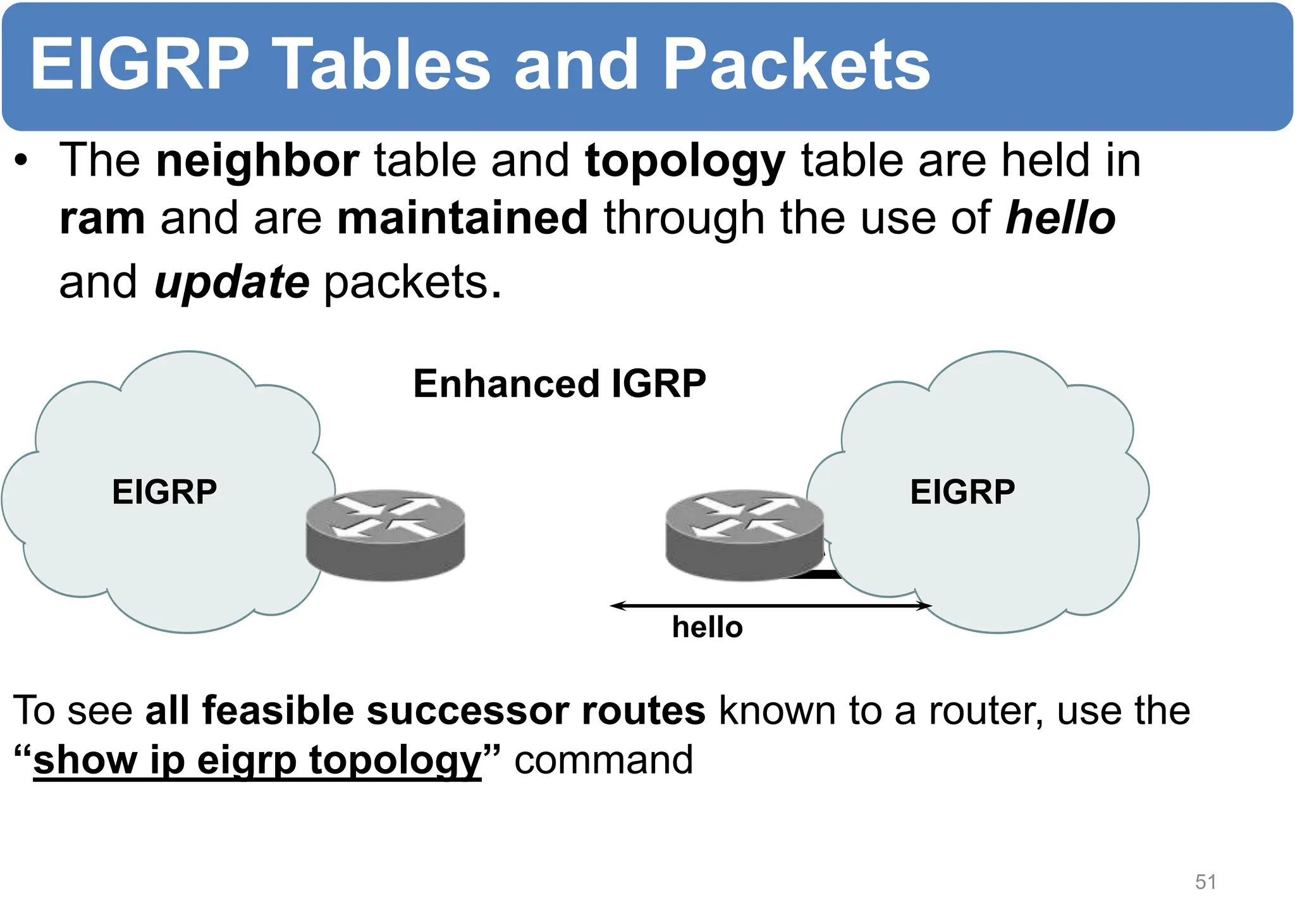



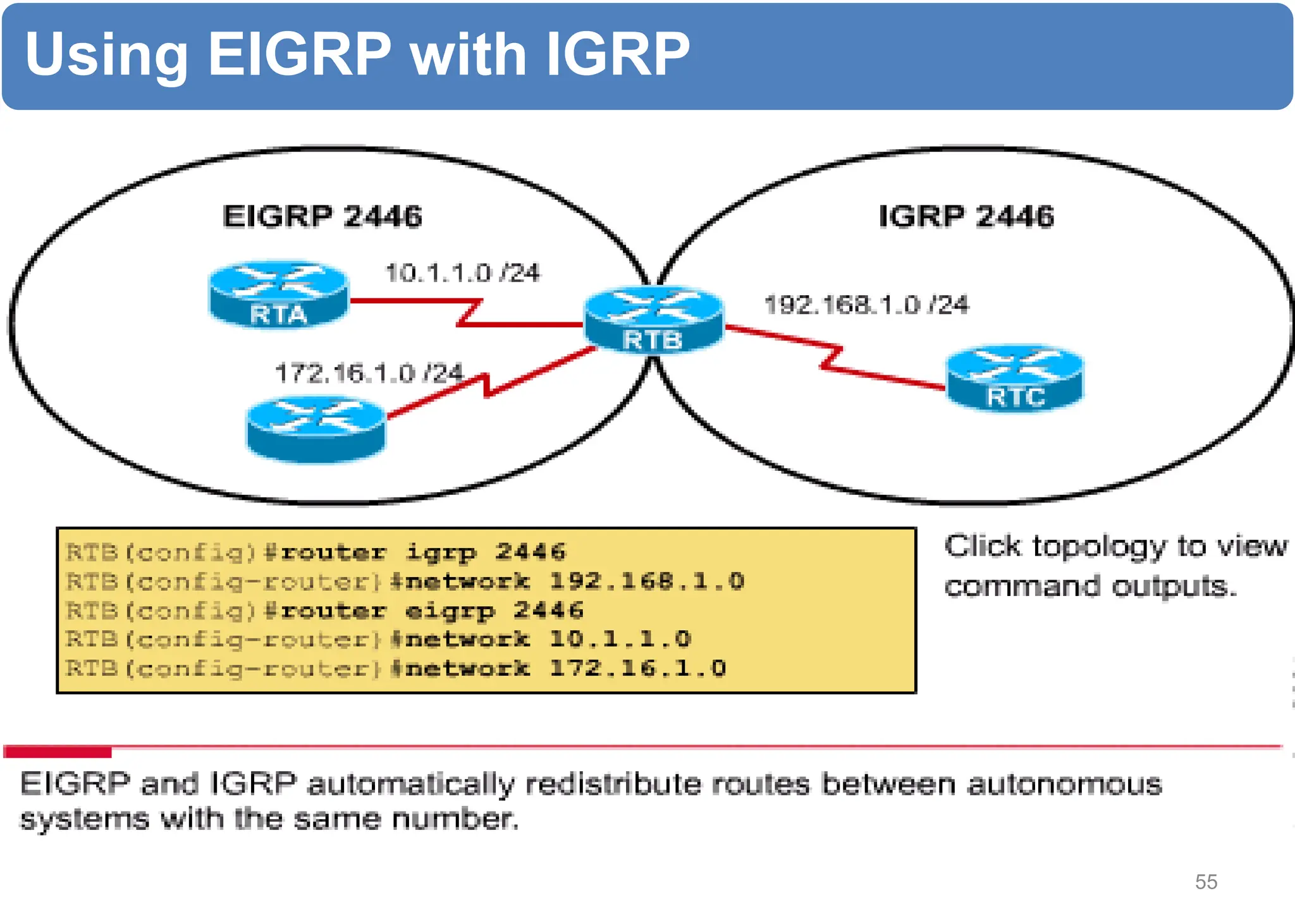
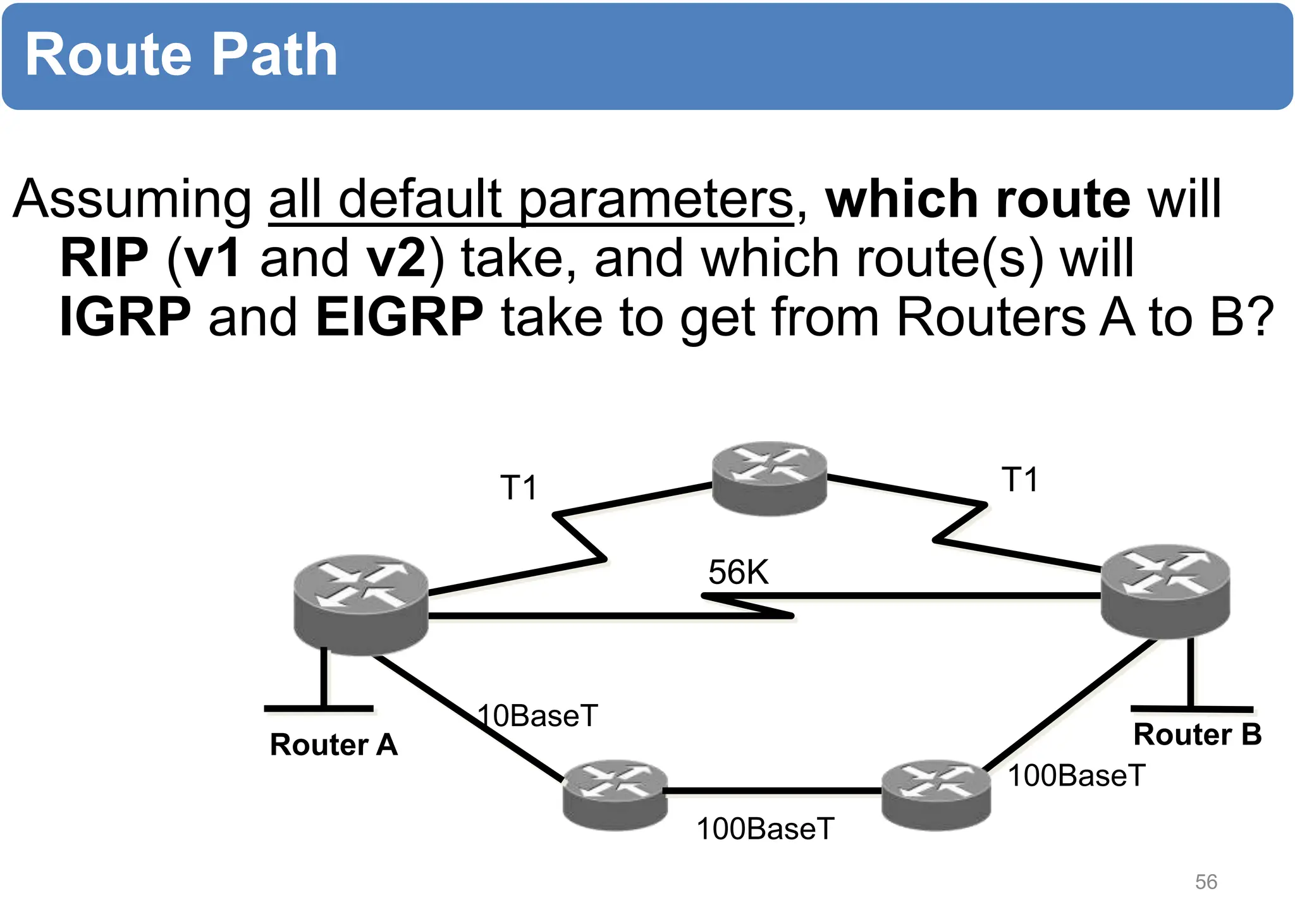

![Show IP Route
-D is for “DUAL”
-[90/2172] is the administrative distance and cost of
the route. The “cost” of the route is a composite metric
comprised from the bandwidth and delay of the line
P1R1#sh ip route
[output cut]
Gateway of last resort is not set
D 192.168.30.0/24 [90/2172] via 192.168.20.2,00:04:36, Serial0/0
C 192.168.10.0/24 is directly connected, FastEthernet0/0
D 192.168.40.0/24 [90/2681] via 192.168.20.2,00:04:36, Serial0/0
C 192.168.20.0/24 is directly connected, Serial0/0
D 192.168.50.0/24 [90/2707] via 192.168.20.2,00:04:35, Serial0/0
P1R1#
58](https://image.slidesharecdn.com/6978106-231127081631-5148eadc/75/6978106-ppt-58-2048.jpg)
